The Red Highway begins with a spare, haunting account of the Czech artist Karel Kupka clambering out of a plane and (as the book’s first sentence has it) stepping “for the first time into the elusive world of Arnhem Land.” Born in the last year of World War I, and growing up in a cultured family at the centre of Prague’s intelligentsia, Kupka had made his way to Paris in the last year of the next war, got to know tribal art in the studio of Andre Breton and then, somewhat mysteriously, come out to Aboriginal Australia, as if to find his way back to a deeper, purer history that could restore him after civilisation as he knew it in Europe was destroyed in two terrible wars.
Yet the first effect of any open space is to concentrate the eye; when few things are around, you start to pay close attention to every one, and begin to find in each seemingly casual detail a universe of resonance. So it is with Rothwell’s characteristically deep, private and often terrifying work. Kupka was moving under a kind of “compulsion,” we read, and “had pictured himself as an outsider, carrying out profound investigations” in the bush. He was at once fascinated and disquieted by the spirits, the witch doctors, the writhing creatures from the world of sorcery he discovered as he deepened his “advance into the shadows” of Australia’s hidden north. In Darwin he was asked to paint an Aboriginal Madonna for a new cathedral, its predecessor damaged beyond repair by Japanese attacks in war. He did so, but his work was stolen and then returned, a little bruised, and hung so that it could hardly be inspected.
Anyone who has seen the tall, 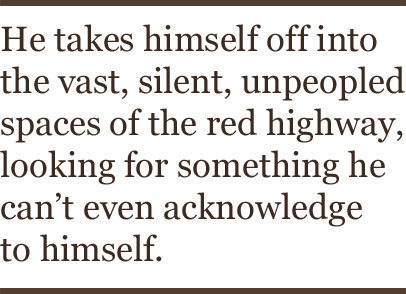 thin, somewhat displaced Nicolas Rothwell may grow a little startled to read that Kupka was “tall, and thin, and somewhat out of place.” Anyone who has read Rothwell’s earlier books – Wings of the Kite-Hawk, Heaven and Earth and Another Country – may feel a penetrating chill when she reads that Kupka, in Sydney, seemed “a pale, transfigured creature, striking through with his words to some uncharted higher realm.” Those who may happen to know that Rothwell is half-Czech and half-Australian will see that there is something more going on here than just the excavation of rich and fascinating history, and the telling of a mysterious fable about an European artist, pushed almost against his will into the secret and oblique silences of Australia’s heart. While recounting a formal, factual, meticulously precise story about a figure trying to salvage something from the magnetic north before it dies – or he does – Rothwell is clearly laying out something much closer to the bone as, again and again, he takes himself off into the vast, silent, unpeopled spaces of the red highway, looking for something he can’t even acknowledge to himself. While flying towards Arnhem Land for the first time, he tells us, Kupka’s plane (the Star of Australia) crashed, which meant that the traveller was stripped of almost everything, and felt that he was now released for a journey into a “new and deeper life,” on the far side of death.
thin, somewhat displaced Nicolas Rothwell may grow a little startled to read that Kupka was “tall, and thin, and somewhat out of place.” Anyone who has read Rothwell’s earlier books – Wings of the Kite-Hawk, Heaven and Earth and Another Country – may feel a penetrating chill when she reads that Kupka, in Sydney, seemed “a pale, transfigured creature, striking through with his words to some uncharted higher realm.” Those who may happen to know that Rothwell is half-Czech and half-Australian will see that there is something more going on here than just the excavation of rich and fascinating history, and the telling of a mysterious fable about an European artist, pushed almost against his will into the secret and oblique silences of Australia’s heart. While recounting a formal, factual, meticulously precise story about a figure trying to salvage something from the magnetic north before it dies – or he does – Rothwell is clearly laying out something much closer to the bone as, again and again, he takes himself off into the vast, silent, unpeopled spaces of the red highway, looking for something he can’t even acknowledge to himself. While flying towards Arnhem Land for the first time, he tells us, Kupka’s plane (the Star of Australia) crashed, which meant that the traveller was stripped of almost everything, and felt that he was now released for a journey into a “new and deeper life,” on the far side of death.
The Red Highway is a masterful and unforgettable book in its own right, spooked and riveting and full of echoes; but it is also just one more part of a huge scroll that Rothwell seems to be assembling, piece by piece, as he fills in the secret history of his continent (and, by potent implication, himself). Much like the late German writer WG Sebald, whom he strikingly resembles in his sombre, attic eloquence, Rothwell seems drawn by his hauntedness deeper and deeper into precisely those places most guaranteed to unsettle him. Over and over he is attracted to figures of melancholy, to intimations of death. Sebald was born in Germany in 1944, son of a Nazi soldier, so everywhere he went in Europe – tramping around England or visiting the cities of Italy – he always seemed to end up either in a churchyard, shaken, or excavating some odd solitary as exiled as himself. Rothwell grew up mostly in Europe, with Australia in his blood, and surrounded by the ghosts and suicides of that used-up world. As he pushes farther into the emptiness at the centre of the oldest continent, everyone he meets seems to have a European past, and nearly everywhere he goes betrays deep scars from World War II. So even as he is pressing into the future, away from the vengeful cycles of history, he is met at every turn by relics from the past, as if everything is conspiring to create a huge tapestry of pain and restoration.
This teaches you to read the book in a very special way, attending with one eye to the vivid, funny, atmospheric accounts of the writer’s often ill-begotten trips into the desert or conversations with old acquaintances who refuse to take him too seriously; and with the other to the secret pattern invisibly developing behind the scenes. Everything has at once an immediate life and a kind of shadow in Rothwell’s work, which means that we devour, say, the details of the story of Henk Guth, a Dutch painter who moved to Alice Springs and began to bring the palette of “the old Dutch masters – deep, rich sepia earths, dark greens and wheat-sheaf yellows” to a scene more often associated with blinding sunlight, dazzled red and cloudless blue. Yet even as we succumb to the spell of the narrative, we realise that this description of importing a shadowed Rembrandt eye to the light-filled surfaces of Australia is, in fact, a perfect distillation of the book we’re reading.


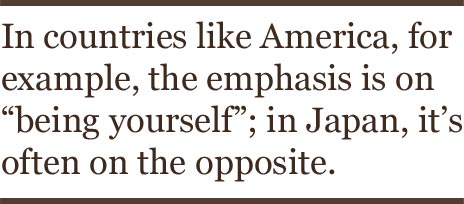 Yet when the floats began to move through the busy streets, in the great summer festival of Gion Matsuri, I started to notice other things below the classic surfaces. Many of the men in white-and-blue yukata, chanting a traditional song in unison, had the dragon tattoos of gangsters across their bare chests. Many of the young women running after them were teetering on 8-inch platform heels, their hair bright yellow and their skins artificially tanned in the fashion of the moment. Even some of the tiniest little boys were calling their mothers on tiny cell phones. The ancient rites were observed solemnly, with dignity and elegance; but they were woven into and around and through the most garish of modern Western artifacts. As if (as often happens) a geisha were carrying a boom box into a traditional inn.
Yet when the floats began to move through the busy streets, in the great summer festival of Gion Matsuri, I started to notice other things below the classic surfaces. Many of the men in white-and-blue yukata, chanting a traditional song in unison, had the dragon tattoos of gangsters across their bare chests. Many of the young women running after them were teetering on 8-inch platform heels, their hair bright yellow and their skins artificially tanned in the fashion of the moment. Even some of the tiniest little boys were calling their mothers on tiny cell phones. The ancient rites were observed solemnly, with dignity and elegance; but they were woven into and around and through the most garish of modern Western artifacts. As if (as often happens) a geisha were carrying a boom box into a traditional inn.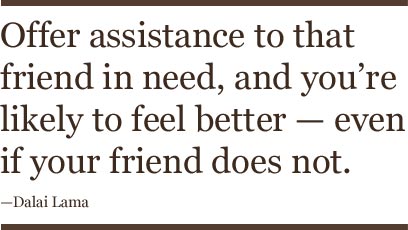 Easy for him to say, you might scoff. He’s a monk, a practiced meditator and, many believe, an unusually wise and even enlightened soul. Yet when you think back on his circumstances, you recall that he was made ruler of his people, responsible for more than 6 million Tibetans, when he was only four years old. He was facing a civil war of sorts in Lhasa when he was eleven, and when he was fifteen, he was made full political leader and had to start protecting his country against Mao Zedong and Zhou Enlai, leaders of the world’s largest (and sometimes least tractable) nation. This spring marks the completion of half a century for him in exile, trying to guide and protect 6 million Tibetans he hasn’t seen in fifty years, and to rally 150,000 or so exiled Tibetans who have in most cases not seen Tibet. This isn’t an obvious recipe for producing a vividly contagious optimism.
Easy for him to say, you might scoff. He’s a monk, a practiced meditator and, many believe, an unusually wise and even enlightened soul. Yet when you think back on his circumstances, you recall that he was made ruler of his people, responsible for more than 6 million Tibetans, when he was only four years old. He was facing a civil war of sorts in Lhasa when he was eleven, and when he was fifteen, he was made full political leader and had to start protecting his country against Mao Zedong and Zhou Enlai, leaders of the world’s largest (and sometimes least tractable) nation. This spring marks the completion of half a century for him in exile, trying to guide and protect 6 million Tibetans he hasn’t seen in fifty years, and to rally 150,000 or so exiled Tibetans who have in most cases not seen Tibet. This isn’t an obvious recipe for producing a vividly contagious optimism.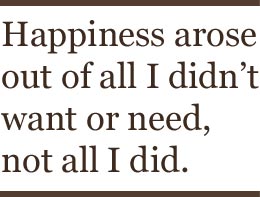 So–as post-60s cliche decreed–I left my comfortable job and life to live for a year in a temple on the backstreets of Kyoto. My high-minded year lasted all of a week, by which time I’d noticed that the depthless contemplation of the moon and composition of haiku I’d imagined from afar was really more a matter of cleaning, sweeping and then cleaning some more. But today, more than 21 years later, I still live in the vicinity of Kyoto, in a two-room apartment that makes my old monastic cell look almost luxurious by comparison. I have no bicycle, no car, no television I can understand, no media–and the days seem to stretch into eternities, and I can’t think of a single thing I lack.
So–as post-60s cliche decreed–I left my comfortable job and life to live for a year in a temple on the backstreets of Kyoto. My high-minded year lasted all of a week, by which time I’d noticed that the depthless contemplation of the moon and composition of haiku I’d imagined from afar was really more a matter of cleaning, sweeping and then cleaning some more. But today, more than 21 years later, I still live in the vicinity of Kyoto, in a two-room apartment that makes my old monastic cell look almost luxurious by comparison. I have no bicycle, no car, no television I can understand, no media–and the days seem to stretch into eternities, and I can’t think of a single thing I lack.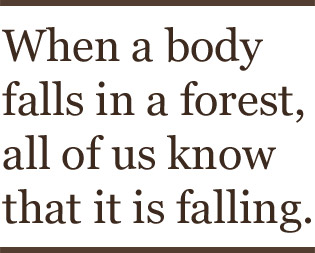
 I had been so entranced by the hidden palace, Taprobane, that I had actually asked my taxi-driver to stop during my previous trip to Sri Lanka and had waded out, uninvited, to inspect the famous former home of Paul Bowles and the Count de Mauny-Talvande. Now, however, I was semi-legitimate, so I motioned out to the two distant figures. The waves rose between me and them and, in any case, the distance was too far for a voice to carry. The water came in and in, pooling around my feet. Finally, after about twenty minutes of non-communication, the figures waved at me to stay where I was, and two others opened the white door and splashed through the surf towards the shore, their shorts turning black and water-logged as they did so.
I had been so entranced by the hidden palace, Taprobane, that I had actually asked my taxi-driver to stop during my previous trip to Sri Lanka and had waded out, uninvited, to inspect the famous former home of Paul Bowles and the Count de Mauny-Talvande. Now, however, I was semi-legitimate, so I motioned out to the two distant figures. The waves rose between me and them and, in any case, the distance was too far for a voice to carry. The water came in and in, pooling around my feet. Finally, after about twenty minutes of non-communication, the figures waved at me to stay where I was, and two others opened the white door and splashed through the surf towards the shore, their shorts turning black and water-logged as they did so.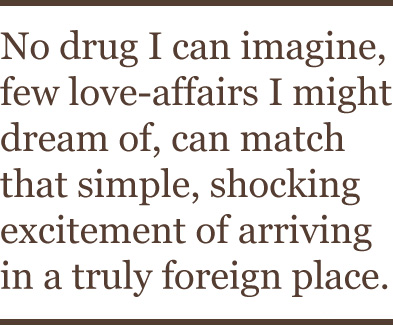
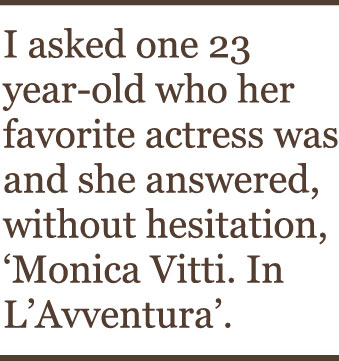
 Everywhere I’ve been this year — from Jerusalem to Japan to Colombia to Italy and back again — I’ve heard people essentially say that America is an overweight, white plutocrat who is not only out of touch with the world but also shows no signs of wanting to grow closer to it. This is as unfair as any image — contradicted at every moment by the kindness and curiosity of many Americans — but it remains a potent one in a world where people communicate more with images than ideas and assumptions travel faster than truths. The best way to begin to correct it is to show the world a leader who can’t really say how much he’s African or Asian or American or just a product of their mixing in Hawaii. The point is not just that Obama will bring globalism to America; in his name, his face and his issues, he’ll bring America back to the globe.
Everywhere I’ve been this year — from Jerusalem to Japan to Colombia to Italy and back again — I’ve heard people essentially say that America is an overweight, white plutocrat who is not only out of touch with the world but also shows no signs of wanting to grow closer to it. This is as unfair as any image — contradicted at every moment by the kindness and curiosity of many Americans — but it remains a potent one in a world where people communicate more with images than ideas and assumptions travel faster than truths. The best way to begin to correct it is to show the world a leader who can’t really say how much he’s African or Asian or American or just a product of their mixing in Hawaii. The point is not just that Obama will bring globalism to America; in his name, his face and his issues, he’ll bring America back to the globe.